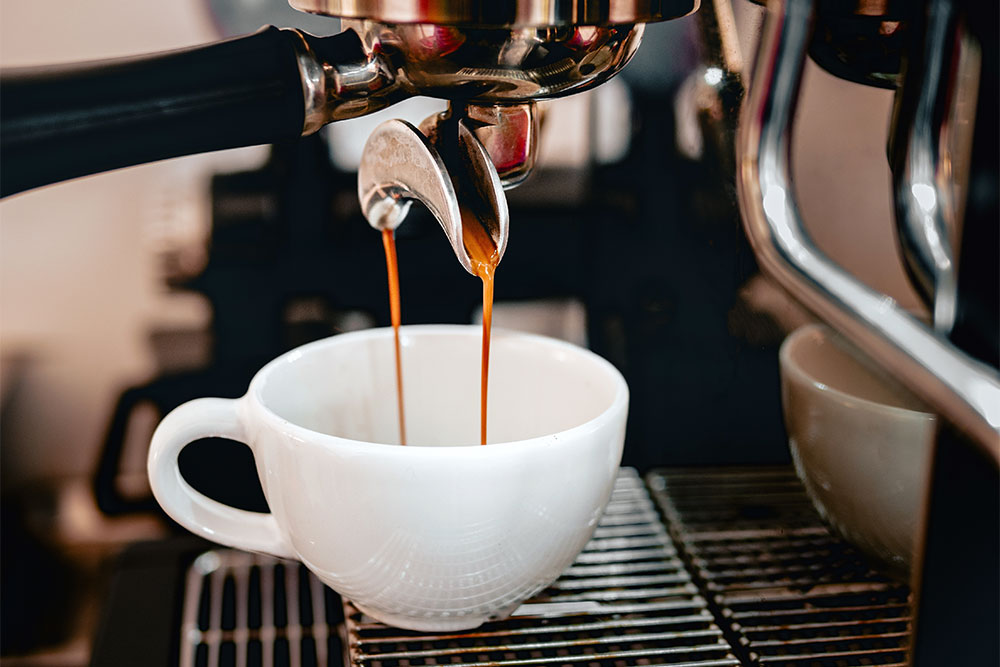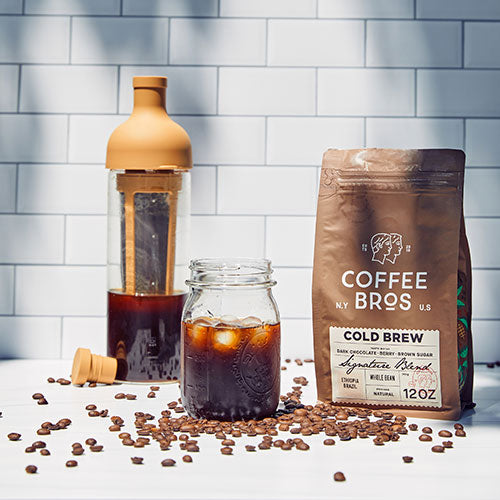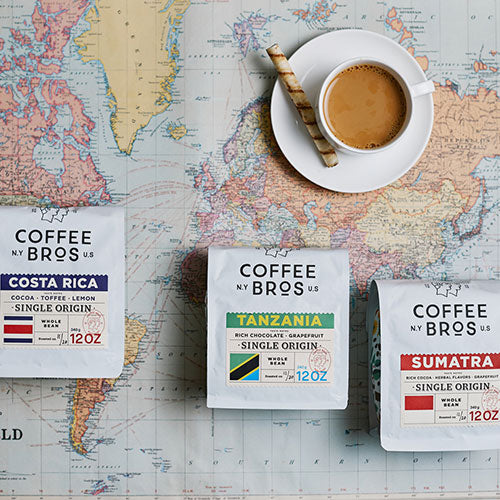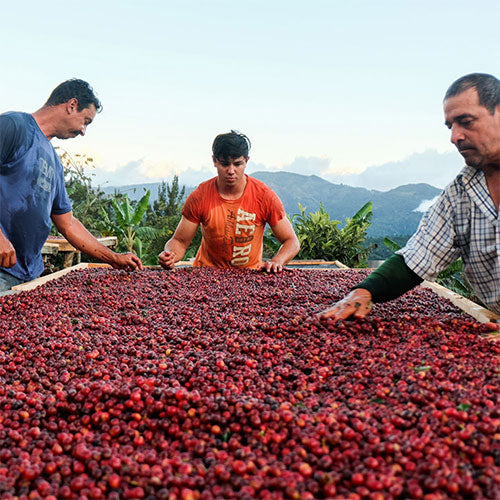Introduction
Espresso is one of those beverages that seemingly creates a ton of confusion when it comes to your everyday caffeine drinker. While brewing espresso at home has certainly taken off in recent years, many of us still trot down to our local café for that golden brown goodness. Often, we are in such a hurry to really question or better understand the drink we all know and love.
Many of us drink espresso daily, and some may not even realize it, which is why many of us question what espresso is anyway! We’ve heard all sorts of espresso questions and statements, like espresso being a specific type of coffee bean or roast or individuals not understanding the critical differences between standard brewed (drip) coffee and espresso.
We are here to answer all your espresso questions, so the next time someone asks you, “What is espresso?” You’ll be armed to explain this lovely drink in various ways!
Coffee Subscription Deal
Subscribe to Coffee Bros. coffee for 25% off when using code "FTSUB25" at checkout
Table of Contents
- What is espresso?
- How does espresso differ from coffee?
- Are espresso beans different than regular coffee beans?
- How is espresso prepared?
-
How many ounces are in an espresso shot
- What is a single shot of espresso?
- What is a double shot of espresso?
- What is a triple shot of espresso?
- Summary
-
Espresso FAQ
- What is an espresso portafilter?
- What are espresso baskets, and why are they important?
- What are espresso brew ratios?
- What are popular espresso milk-based drinks?
- What are the best machines for espresso?
What is espresso?
When you hear the term espresso, you may default to associating it with a drink that comes in a tiny 2oz white ceramic cup, and hey, you wouldn’t be wrong!
But what if I told you that espresso is also a brewing method that requires a unique machine and grinder capable of achieving the parameters needed to brew that tiny cup?
And there’s more: while that tiny ceramic cup of espresso is undoubtedly a worthy drink on its own, using that espresso as a base can create a wide variety of drinks, such as a macchiato, cortado, latte, flat white, cappuccino, and more.
But before we dive too deep into the rabbit hole of why many of us struggle with espresso, which is quite complex, let’s get a basis around what espresso truly is!
A brief description of what is espresso:
Espresso is a method of brewing coffee that involves pushing a small amount of nearly boiling water through finely ground coffee under high pressure. The process starts with grinding the coffee into a fine consistency and placing it into a portafilter basket. The coffee is then compacted using a tamper and locked into the espresso machine. The machine heats the water to a precise temperature and uses 9 bars of pressure to push the water through the coffee grounds. The resulting beverage, espresso, consists of soluble solids, gases, and insoluble solids. Soluble solids provide the flavor and strength of the espresso; soluble gases contribute to its aroma, and insoluble solids add to its body and texture and help balance any bitterness.
A shot of espresso is characterized by two distinct layers: the crema, a light brown frothy layer on top, and the liquid, a dark brown layer underneath.
Still confused? Well, stick around, and we’ll unpack everything you want to know about espresso.
How is espresso different than coffee?
When considering how espresso brewing differs from standard drip coffee brewing, there are many differences, as each machine brews coffee quite differently, and each resulting drink is distinct.
Before discussing the differences between espresso brewing and brewing a regular cup of coffee, let’s define each briefly.
Coffee brewing: Without going too deep here, when most think of “coffee” as a beverage, they think of a filtered coffee drink, whether through a “drip machine” or a more manual brewing method like a pour-over. There are certainly distinctions between many filtered brew methods, but we will leave that to another article.
Espresso brewing: Espresso is an extremely fast brewing method that pushes high-pressured water through a “puck” of coffee grounds, producing a robust, flavorful, and highly concentrated beverage. This is in stark contrast to an auto-drip coffee, where more water coffee is used, the brew length is much longer, and the clarity of the cup is much higher than that of espresso.
There are also key differences in recipes, ratios, and concentration levels between the two drink types.
Recipe time difference between drip and espresso:
A drip of filtered coffee is a slower brewing method in which water drips through a bed of coffee at roughly 1.5 – 1.75 grams a second, whereas a completed cup may take 3 minutes or more. Espresso is a high-speed and concentrated brewing method in which water pushes through a finely ground puck at roughly 1 gram a second and finishes brewing in 25 – 35 seconds (depending on your recipe).
Concentration difference between drip and espresso:
The other vast difference between coffee and espresso is the concentration. Espresso can be brewed at as little as a 1:1 ratio, meaning for every one gram of coffee, you brew 1 gram of liquid. On the other hand, Drip coffee uses much more water, and the “golden ratio” starts at 1:18 or 18 grams of water for every 1 gram of coffee.
In summary, espresso and coffee (drip or filtered) both use a distinct machine, are brewed at different speeds, and have different ratios, all resulting in a vastly different drink experience. But what about the coffee beans themselves?
As you will learn in the next section, the coffee used for espresso versus drip coffee is technically not different!
Are espresso beans different from coffee beans?
Coffee labeled "espresso" is specifically tailored for optimal performance with the espresso brewing method in mind. The confusion arises when coffee roasters, like us, designate certain medium or dark-roasted coffees as espresso to attract espresso enthusiasts.
Roasters select and roast coffee beans with the espresso brewing process in mind, resulting in blends or roasts labeled as "Espresso." This labeling helps consumers who are searching for the ideal coffee for their home espresso machines focus on options specifically crafted for espresso preparation.
While any coffee can technically be used for espresso, many people prefer medium to darker roasted coffees, particularly those who enjoy their espresso with milk, such as in lattes or cappuccinos, since darker roasts complement the milk better.
In developing an espresso blend, roasters consider several factors to achieve the desired taste profile:
- How the coffee will taste as a standalone espresso.
- How the coffee will taste when combined with milk.
Espresso coffee can range from light-medium to dark roasts, each offering distinct flavor profiles. Some consumers might seek a bright, sweet, and fruity espresso, while others might prefer a bold, rich, and chocolatey one. For espresso to be paired with milk, roasters usually aim for a medium-dark to very-dark roast to ensure the espresso's flavor can stand out against the milk.
When you encounter coffee labeled "Espresso," understand that it's not inherently different from other coffees you can buy. Any coffee, if ground fine enough, can be brewed as espresso, and any coffee ground to the coarseness needed for filter brewing will also work. However, note that coffee labeled “Espresso” has been roasted with a specific brewing method in mind!
Try Our Top-Selling Espresso
How is espresso prepared?
The espresso drink is a unique form of coffee brewing that requires a machine that can push water at 9 bar of pressure or 130 pounds of force per square inch through a finely ground and tamped “puck” of coffee.
Equipment needed for espresso brewing:
An espresso machine and its accessories (portafilter, basket, tamper)
An espresso grinder that can grind coffee fine enough for espresso brewing. A regular coffee grinder will not be able to produce grounds fine enough to withstand the 9 bar of pressure needed.
To brew espresso, you’ll need the above equipment and a recipe in mind (check out our espresso drink calculator). Then, follow the steps below.
Basic espresso preparation steps:
- Find an espresso recipe: Our calculator for an espresso drink recipe, including ratios, can help you.
- Grind your coffee: Grind the coffee needed for your espresso recipe, typically in the 16 – 18g range for a double shot. The grounds must be fine enough that the time it takes to brew your espresso to the desired weight ends in roughly 25 - 35 seconds.
- Place grounds into the portafilter: Place your espresso grounds into the portafilter and distribute them using good espresso puck preparation techniques. Follow our espresso puck preparation guide here.
- Tamp your espresso grounds: After performing standard espresso puck preparation and distribution, tamp the espresso grounds with 30lbs of pressure.
- Lock in your portafilter and brew: Once all is tamped, lock in your portafilter to the group head and brew your espresso!
- Stop the shot at the intended weight: Stop the espresso shot once it reaches the intended weight, for example, 36 grams, regardless of what time it may have reached it. If the espresso shot brewed too quickly (compared to your recipe suggestions), go back and grind the coffee more fine.
Recommended Reading: How to Brew Better Espresso for a complete guide on brewing and assessing your espresso shot
How many ounces in an espresso shot?
If anything in espresso were straightforward, then it wouldn’t be espresso!
When it comes to espresso brewing, you have simple and more complex answers. For example, the volume of a single shot of espresso does not account for the ratio one might be using.
The simple yet incorrect answer is the following:
- A single shot of espresso is roughly 1 ounce in volume.
- A double shot of espresso is roughly 2 ounces in volume.
- A triple shot of espresso is roughly 3 ounces in volume.
Before you stop there, we implore you to read on as measuring anything in coffee by volumetrics like ounces is not only difficult to do but even more frustrating when understanding ratios and recipes.
Measure your espresso in grams and not ounces:
Our suggestion is to always measure in grams in (amount of coffee in) and grams out (amount of liquid gold espresso that hits your shot glass.)
To make things even more confusing, not all single, double, or triple shots are the same as each may have a ratio behind them that alters the end weight.
To throw you right into the deep end, espresso brewing has three traditional ratios:
Ristretto: Traditionally, a ristretto espresso is a 1:1 ratio of coffee grounds to extracted espresso. An example of a ristretto would be using a single basket with 9 grams of coffee, yielding 9 grams of espresso. The closer the ratio is to 1:1, the more intense and heavier mouthfeel the espresso shot will be. The further the ratio is from 1:1, let’s say a 1:3 ratio (gram of coffee grounds to 3 grams of water), the higher the clarity and less intense of a shot it becomes.
Normale: A normale is a 1:2 ratio of coffee grounds to extracted espresso. If we were again looking at a normale single shot of espresso, we would expect 9 grams of espresso grounds to 18 grams of liquid.
Lungo: A lungo uses a 1:3 to 1:4 ratio, meaning that for every 1 gram of ground coffee, you should yield 3 – 4 grams of brewed espresso. The lungo has higher clarity and is much less intense than a ristretto or double shot. You typically find lungos in traditional Italian cafes, where they use 7 grams of coffee, yielding a 21-gram espresso shot.
*image from Flair Espresso: https://flairespresso.com/learn/espresso-guide/brew-ratios/
Confused yet? Well, don’t be, as most tend to stick with one shot type and ratio and call it a day, but do know others exist. What works great with milk-based drinks tends to be normale double shots of 18 grams of espresso in and 36+ grams of liquid out. If you enjoy lighter roast shots without any milk, open up your ratio to have more water, and the clarity of your shot will improve.
Summary
Hopefully, this article did not confuse more than it informed about espresso and how it differs from traditionally brewed coffee.
In summary, espresso is a unique concentrated beverage where finely packed coffee gets placed into a machine, and pressurized water pushes itself through the “puck” of coffee within 30 seconds to create a rich beverage, unlike any other coffee brewing method.
You’ve learned that espresso brewing requires specific equipment (an espresso machine and grinder) to brew properly, and that espresso coffee is not different from any other coffee; it is just roasted to highlight that specific brewing method.
Finally, espresso shots range from 1 – 3 ounces, and depending on the ratio and recipe, they can scale from there. The best way of measuring ratios is always in grams, and using ounces is complicated and inaccurate at best.
Espresso FAQ
What is an espresso portafilter?
The portafilter is a key component of an espresso machine. It is the "handle" that sticks out where the coffee is dispensed and is also sometimes referred to as a "group handle". The portafilter holds a basket that contains the coffee grounds during the extraction process of the espresso shot. The handle and notches on the portafilter allow the user or barista to secure it in place on the machine so it does not come loose during use. The portafilter locks into the machine's group head, with smaller espresso machines, typically having one group head while larger commercial machines have multiple to handle a higher volume of demand.
What are espresso baskets, and why are they important?
A common area where people struggle with brewing espresso is understanding which basket size to use. Even when the correct size is chosen, incorrect dosing can cause issues during the extraction phase.
Baskets come in single, double, or triple sizes, with most people brewing double shots ranging from 14 to 22 grams. However, shot proportions have changed over time with larger drink sizes, so it's not uncommon to see baristas pulling an 18-20 gram double shot.
Each basket is graded based on its capacity (example, 20 gram basket) and circumference (example, 58mm), which corresponds to the espresso machine's group head size. For instance, a 58mm group head machine requires a 58mm portafilter and basket. It's essential to fill the basket with the correct amount of coffee, as adding too little will change the headspace and negatively impact your brew. Conversely, overfilling the basket will create a thicker puck, making it more difficult for water to penetrate during brewing. Stick to the graded range (+ or - 2 grams) of your basket and you will achieve a well-balanced espresso shot.
Single Basket: 6 - 10 grams
Double Basket: 12 - 18 grams
Triple Basket: 18 - 20+ grams
What are espresso brew ratios?
Espresso brew ratios are the amount of coffee grounds used versus the final extraction yield or liquid in your cup.
For example, a double espresso calls for a 1:2 ratio, meaning that for every 1 gram of ground coffee in your espresso portafilter, you aim for 2 grams of espresso yield in your cup. A standard double espresso recipe would call for 19 grams of finely ground coffee in your portafilter, yielding 38 grams of espresso in your cup and typically within 30 – 35 seconds.
What are popular espresso milk-based drinks?
The following are the most popular milk-based espresso drinks:
- Macchiato
- Cortado
- Latte
- Flat White
- Cappuccino
What are the best machines for espresso?
Recommending the best espresso machine is a complex question and certainly comes down to price point and what the end user is looking for in a machine.
We feel as though we did a pretty good job summarizing what to look for when purchasing an espresso machine and our general recommendations in this article.




